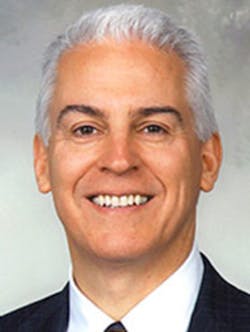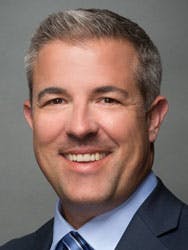Ascension’s The Resource Group balances demand with delivery
The Resource Group, a service company of Ascension and one of the leading change management and supply chain organizations in the nation, proves that volume matters only if member providers and contracted suppliers are satisfied with the results.
The Resource Group strives “to deliver value in line with the strategic direction of the healthcare organizations we serve,” according to Scott Caldwell, President and CEO. “Through our User-Directed Strategic Sourcing process, along with establishing an optimized operations and logistics network that serves more than 2,600 locations and implementing internal purchasing controls, The Resource Group has increased contract compliance to 90 percent while decreasing supply costs by more than $1.2 billion annually,” Caldwell said. “With the continued financial pressures facing healthcare delivery, it is critical to work closely with end-users to lead with quality and reduce variation while maximizing the ability to serve our patients and caregivers. This fiscal year, we will contribute another $110 million in annual non-payroll savings while simultaneously achieving a net promoter score (NPS) of 8.6.”
Caldwell distinguishes his company from traditional GPOs.
“It’s important to remember that the term GPO is a legal designation not an operational design; it does not define The Resource Group,” Caldwell noted. “The traditional GPO model often implies there is significant value in volume aggregation alone. The Resource Group, while it manages significant volume, focuses on end-user satisfaction, which has proven to reduce costs more effectively and sustainably. End-user satisfaction drives contract compliance and signals to suppliers that they can extend their best pricing and obtain compliance without local facility-by-facility efforts.”
Caldwell links commitment achievement to member satisfaction more than any other “encouragement” methods.
The Resource Group distributes an executive satisfaction survey every year, according to Caldwell. Last year they recorded an NPS of 8.6, across nearly 200 responses. “We know that contract compliance is affected by end-user satisfaction,” he said. “If end-users are not satisfied with the contracted products and services, they will not use them. If you can ensure satisfaction, you eliminate the need to enforce compliance. It will naturally occur. Caregivers trust that The Resource Group engages physicians and clinicians through every step of the decision-making process.”
Caldwell told Healthcare Purchasing News that their process works like this: Each category has a Decision Team or Affinity Group. Affinity Groups are for high-preference areas such as Orthopedics, Cardiology, etc. Decision Teams concentrate on everything else from Lab to commodity products to Capital Equipment. Each group comprises physicians, clinicians and some department leaders. The Affinity Groups typically include facility CEOs as well. While finance leaders are involved in the process, they do not participate in group meetings. Financial demands may be an impetus for change, but they do not drive decision-making. These groups are centralized at the national level, but include representation across participants.
To accelerate value provided, The Resource Group establishes purchasing and operational processes in each facility, according to Todd Adams, Vice President, National Operations. “The Resource Group manages the resource and supply chain function for all of its participants,” Adams said. “It’s important to realize that The Resource Group model is not an overlay to a current structure. Instead, it is a complete redesign that ensures the organization we are serving does not incur additional labor costs. A permanently embedded and highly-talented team, known as the Value Realization team, is on-site and oversees end-to-end supply operations. This even includes training and oversight of requestors to provide guidance of on-contract alternatives when off-contract items are requested. We also lead all initiative implementations and monitor several KPIs proactively to ensure processes are optimized.”
The number of embedded Value Realization resources varies depending on the characteristics of each site, Adams acknowledged, “but there is typically one leader, the Chief Resource Officer, and then Operations, Implementation and Analyst associates. Many times these associates cover multiple facilities.” These embedded resources are employed by The Resource Group, which is key to ensuring they can implement the model, he added. “However, the teams do not operate in a silo; they collaborate extensively with facility leadership to ensure strategies and goals are aligned.”
The model is designed to remove the burden of running the supply chain from providers and caregivers, according to Adams. “When implemented, supply chain runs silently in the background,” he added. “Although the operational component of The Resource Group’s model delivers 96 percent fill rates and 98 percent on purchase order spend, end-users do not acknowledge or care about our best-in-industry results — nor should they — as accurate and on-time product delivery is a minimal expectation of service.”
The Resource Group’s operations and logistics process is further enabled by funneling maximum volume through consolidated distribution channels, according to Adams. “It’s often surprising to our peers when they realize we’ve accomplished industry-leading metrics and customer service, while owning no warehouses, utilizing virtually no low unit of measure, and receiving products three times a week.” Adams indicated. “If you have reduced variation to an optimal level and established the correct process controls, expensive distribution services and capital expenditures are simply not necessary and do not improve results.”

Rick Dana Barlow | Senior Editor
Rick Dana Barlow is Senior Editor for Healthcare Purchasing News, an Endeavor Business Media publication. He can be reached at [email protected].







